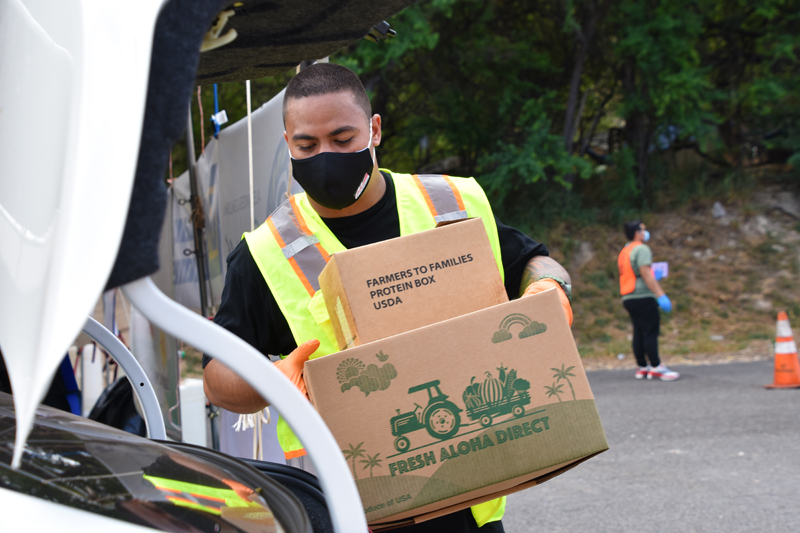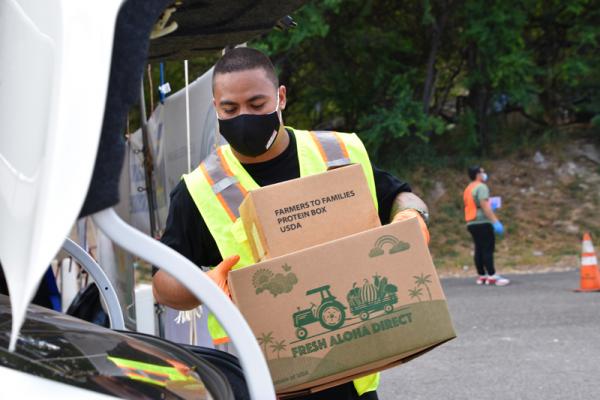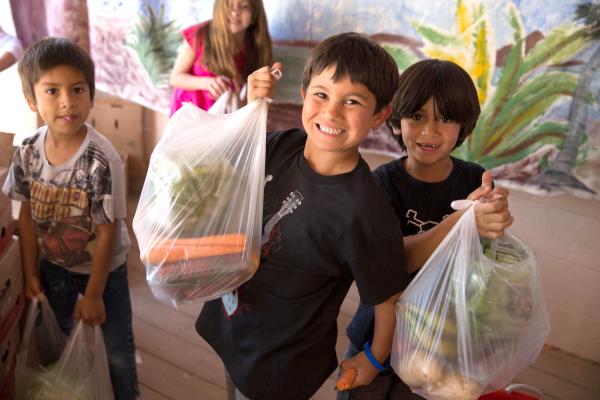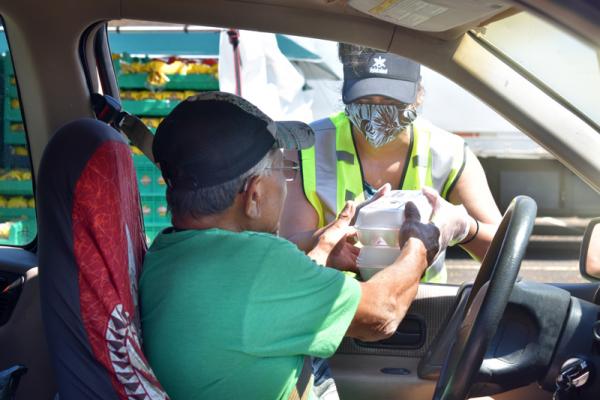KID REPORTERS’ NOTEBOOK
Helping With Food Insecurity on Oahu


A volunteer loads boxes into a car at a drive-through distribution event on the island of Oahu.
The COVID-19 pandemic is still affecting life on the island of Oahu in Hawaii. Public school instruction is conducted remotely, many businesses are still closed, tourism has ground to a halt, and a four-week stay at home order ended on September 24. According to the Hawaii Department of Labor and Industrial Relations, Hawaii’s unemployment rate in August was 12.5%. This is an improvement from May, when the rate had climbed to 22.6%. But it is much higher than January’s pre-COVID rate of 2.7%.
The loss of jobs in Hawaii has resulted in increased food insecurity. The Hawaii Foodbank has stepped in to help. The nonprofit organization supplies food free of charge to anyone in need. It works with more than 200 partners across the islands of Kauai and Oahu to get food into local communities. These partners include churches, schools, and other nonprofit organizations.
“We don’t want people to have to travel a long way to get food,” said Marielle Terbio, director of community engagement and advocacy at Hawaii Foodbank. “Before COVID-19, one in eight people on Oahu was facing hunger and food insecurity. This year, we are estimating one in five people facing hunger, and one in three children.”
The top items that most people request are vegetables, fruit, protein, and rice. To prevent spoiling, most food banks rely on canned products. “Canned meals and soups are important, Terbio said, “because if you add rice or water, you can stretch it and feed more than one person.”

Children display the bags of fruits and vegetables they received at a food-distribution event.
HELPING COMMUNITIES IN NEED
Before the pandemic, the Hawaii Foodbank distributed 45,000 to 50,000 pounds of food each day. “Now, we’re at 75,000 to 80,000 pounds of food a day,” Terbio said. That comes out to about 400,000 pounds each week.
In response to the growing need, the Hawaii Foodbank is holding special food distribution events in addition to its regular programs. “We know a lot of people have lost their jobs or have been furloughed, Terbio said. “Coronavirus has been hard on our community.” Additional drive-through distribution efforts at Aloha Stadium helped up to 4,000 families each.
The donated food comes from several sources, including manufacturers, wholesalers, growers, retailers, the United States Department of Agriculture (UDSA), and food drives. Anyone can donate money to the Hawaii Foodbank, or a local food bank, by going online.
Terbio explained that every $10 donation provided up to 25 meals. With so much need, many people are also pitching in by organizing food drives, volunteering at food distribution events, and sorting food baskets.

On the island of Oahu, an increased number of people are facing food insecurity because of the coronavirus pandemic.
